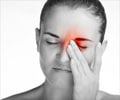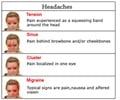Highlights
- A migraine is a painful headache that affects millions of people worldwide.
- Migraine can be prevented by eliminating certain foods from the diet.
- Common migraine triggers are processed food, caffeine and alcohol.
- A low-fat and low-carbohydrate diet can help prevent a migraine attack.
"One of the most important triggers for a headache is the withdrawal of caffeine.” When a person who drinks three or four cups of coffee every morning suddenly skips caffeine one day, he is more likely to have a full-fledged caffeine withdrawal headache that day, explained Dr Martin.
Large amounts of caffeine consumption can cause anxiety, depression, and headaches. “Excessive caffeine may also present a risk, no more than 400 milligrams daily--one cup is 125 milligrams--is probably the maximum for migraine patients,” said Dr Martin.
Common Triggers of Migraine
Nitrites
Processed foods such as bacon, sausage, lunch meat and ham contain nitrites to preserve the color and flavor. According to a dairy study, about five percent of individuals with a migraine are more likely to have an attack on days when they consume processed foods containing nitrites. With stronger food regulation, the use of nitrites in foods has declined. However, it is advisable to check the labels before purchasing food.
MSG is another common trigger for a migraine. MSG is a flavor enhancer that is used in Chinese cuisine. It is also used in a variety of food products such as ketchup, barbecue sauce, salad dressing, seasoning salts, canned foods, soups, and snacks. It is best to avoid such processed foods and opt for fresh fruits and vegetables to prevent a migraine attack.
"Eliminate a migraine by eating fewer processed foods. Eat more natural foods such as fresh vegetables, fresh fruits, and fresh meats. MSG is most provocative when consumed in liquids such as soups."
Alcohol is the most commonly reported trigger for a migraine. Alcoholic beverages that contain the highest histamine content are problematic, said Dr Martin. Studies have shown that vodka and red wines are likely to cause a painful migraine.
Migraine Prevention Diet
The three comprehensive diets that may prevent a migraine are low-fat, low-carbohydrate diets and also diet rich in omega-3 fatty acids. “There is a lot of interest in gluten-free diets, but they are only helpful in lessening headaches if the individuals suffer from celiac disease, which can be established by a positive blood test or intestinal biopsy, said Dr Martin.
Dr. Brinder Vij, the co-author of the study, associate professor in the UC Department of Neurology and Rehabilitation Medicine, said, “Low-fat diets restrict the amount of fat in the diet to less than 20 percent of your daily energy requirements. This diet not only reduces headaches but may also aid in weight loss and prevent heart disease."
“Low carbohydrate diets such as ketogenic diets can reduce headache frequency, but it's not something to consider without strict physician supervision. The diet limits carbohydrates more than the well-known Atkins diet,” explained Dr Vij.
Increasing the amount of omega-3 fatty acids and decreasing the amount of omega-6 fatty acids, help individuals with more frequent attacks of a migraine. Omega-3 foods to consume include, salmon, flaxseeds, halibut, cod, and scallops. While foods to avoid, include peanut and cashews.
“Boosting your omega-3 fats while lessening your omega-6 levels means tossing out polyunsaturated vegetable oils (corn, sunflower, safflower, canola and soy) in favor of flaxseed oil,” said Dr Martin.
A headache and migraine sufferers have more dietary options. But a diet to prevent such painful event excludes processed foods and minimizes caffeine and includes large amounts of fruits, vegetables, fish and lean meats.
The study is published in Headache: The Journal of Head and Face Pain.
Source-Medindia












